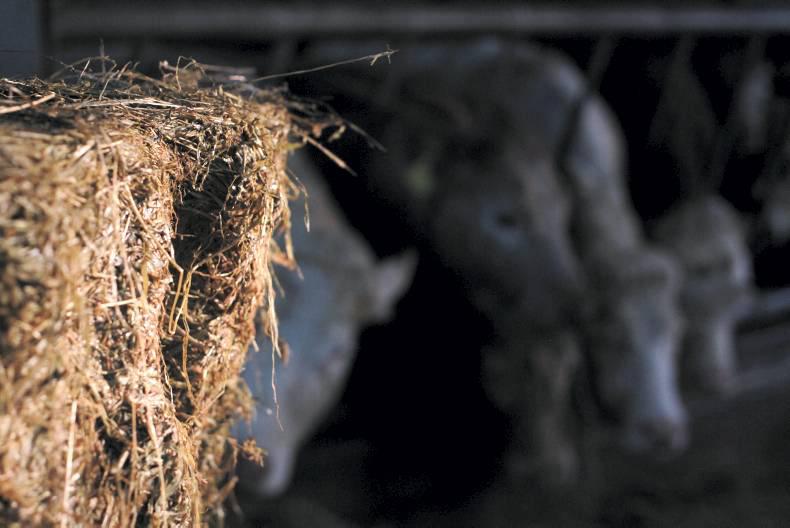As farmers know too well, round bale silage can be very variable in quality and it’s hard to determine quality as each individual round bale is a separate unit, so testing one could mean nothing for the bale beside it. However, many farmers, especially dairy farmers, now take off surplus grass in May, June and July as round bale silage that can be extremely good-quality feed.
The intention of these farmers is primarily to control grass quality during these periods, when growth exceeds what grass is needed on a daily basis. Instead of topping, farmers identify a paddock with a good cover and cut it down for round bales. While the yield is low – between two and four bales per acre – the quality is normally excellent and the result if harvested dry, preserved well and handled carefully can mean 75 to 80 DMD feed. Dairy farmers will know this is quality feed for milking cows to be fed in either late autumn or early spring when grass supply is not available to meet herd demands.
Some farmers set a target to have two bales per cow of this quality feed for feeding in early spring. So this means if you are calving 100 cows down from 1 February to 1 April then you should have at least 200 round bales of quality feed that can be fed with some purchased meal in early spring when grazing conditions are poor or if grass is not available for one reason or another.
On heavy farms some farmers will aim to have three to four bales per cow for this spring period when grazing conditions can be very variable.
Handling bales and milk quality
Some farmers are not well set up to feed round bales and don’t like the workload attached to feeding out round bales. However, managing bales has become a lot easier than it was in the past if set up with the right equipment. There are a number of front loader options that make the job much more streamlined. Different loader options suit different feeding scenarios.
In terms of milk quality, some of the best farmers will say feeding high-quality round baled silage will hold milk solids if some few hours of grazed grass is part of the diet.
In the past often pit silage of much lower quality would have been the supplement and this would have reduced milk solids irrespective of what amount of grazed grass was consumed.
Read more
To read the full Baled Silage Focus supplement click here.
As farmers know too well, round bale silage can be very variable in quality and it’s hard to determine quality as each individual round bale is a separate unit, so testing one could mean nothing for the bale beside it. However, many farmers, especially dairy farmers, now take off surplus grass in May, June and July as round bale silage that can be extremely good-quality feed.
The intention of these farmers is primarily to control grass quality during these periods, when growth exceeds what grass is needed on a daily basis. Instead of topping, farmers identify a paddock with a good cover and cut it down for round bales. While the yield is low – between two and four bales per acre – the quality is normally excellent and the result if harvested dry, preserved well and handled carefully can mean 75 to 80 DMD feed. Dairy farmers will know this is quality feed for milking cows to be fed in either late autumn or early spring when grass supply is not available to meet herd demands.
Some farmers set a target to have two bales per cow of this quality feed for feeding in early spring. So this means if you are calving 100 cows down from 1 February to 1 April then you should have at least 200 round bales of quality feed that can be fed with some purchased meal in early spring when grazing conditions are poor or if grass is not available for one reason or another.
On heavy farms some farmers will aim to have three to four bales per cow for this spring period when grazing conditions can be very variable.
Handling bales and milk quality
Some farmers are not well set up to feed round bales and don’t like the workload attached to feeding out round bales. However, managing bales has become a lot easier than it was in the past if set up with the right equipment. There are a number of front loader options that make the job much more streamlined. Different loader options suit different feeding scenarios.
In terms of milk quality, some of the best farmers will say feeding high-quality round baled silage will hold milk solids if some few hours of grazed grass is part of the diet.
In the past often pit silage of much lower quality would have been the supplement and this would have reduced milk solids irrespective of what amount of grazed grass was consumed.
Read more
To read the full Baled Silage Focus supplement click here.










SHARING OPTIONS